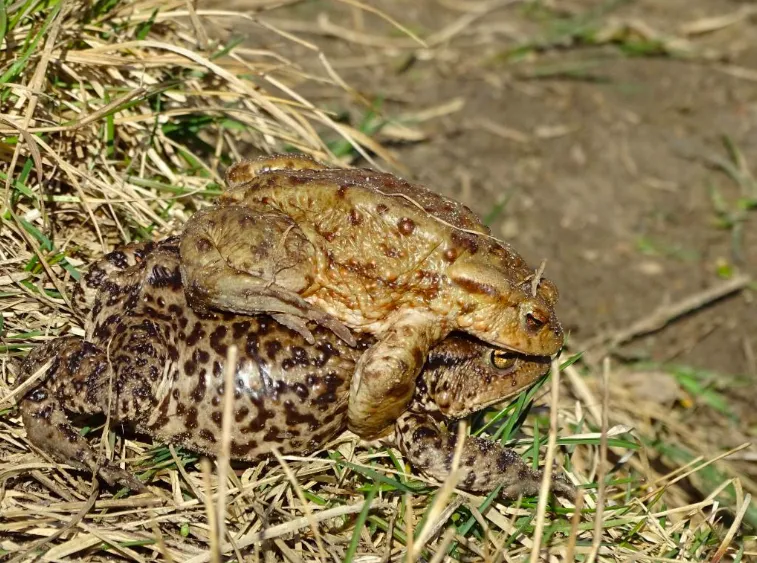
Amphibians are dying out all over the world. It is happening before our eyes, naturalist Tomasz Figarski alarms. These animals are very sensitive to environmental pollution. Therefore, it can be assumed that where amphibians are present - pollution levels are small.
It can be expected that the numbers of frogs, toads, newts, salamanders or tropical legless amphibians will continue to drop all over the world. Since the 1980s, amphibian populations around the world have been declining so rapidly that this phenomenon has been called a mass extinction of amphibians.
"Although there is more talk about mammals and birds, amphibians are the group of vertebrates that are most endangered with extinction. They are dying out before our eyes. This phenomenon can also be seen in Poland" - says Tomasz Figarski, a PhD student at the Institute of Systematics and Evolution of Animals PAS.
According to the the International Union for Conservation of Nature (IUCN) data, 41 percent amphibian species are threatened with extinction. 18 species of amphibians live in Poland, all of them are under protection.
"Amphibians are very sensitive to environmental changes, they have a delicate anatomy, including sensitive skin, which they use to breathe and exchange water with the environment. Because of this, all pollutants that appear in the environment penetrate into their bodies" - the scientist says.
The naturalist explains that amphibians react quickly not only to changes in the chemical composition of waters, but also to changes in the terrestrial environment. "Wherever there are amphibians, we can assume that environmental pollution is small, but if amphibians disappear, it should be a red flag telling us that something bad is happening" - emphasises Tomasz Figarski.
The population of amphibians in a given pond or lake may disappear even within a year. "I see this when I travel around Poland. There are less and less places where amphibians can be found" - the naturalist says.
Part of the problem is that amphibians are not very mobile. "If their habitat is destroyed, they probably will not be able to move somewhere else" - says Tomasz Figarski. A problem for amphibians is, for example, that adjacent habitats are separated by roads, streets and highways. This is a great difficulty for migrating amphibians. This problem is particularly noticeable in the spring when, for example, common frogs, moor frogs, common toads and garlic toads migrate from their wintering grounds to breeding grounds.
"Even if there is low traffic on local roads, amphibian losses are huge. That is why when I drive on a local road and see a frog, I stop, get out of the car and move it. Maybe that`s why I`m always late?" - PhD student wonders.
According to the naturalist, amphibians are sometimes neglected by environmental protection authorities. "In many decisions concerning construction investments it is stated that species such as common toads or common frogs are widespread, common species, and because of that destruction of their breeding grounds can be permitted" - the naturalist says. But as a result of such decisions, amphibians have less habitats, and new ones are rarely created. "And the species once considered common are not common anymore" - he comments.
Amphibians are also decimated by chytridiomycosis - a disease caused by a fungus. This disease impairs gas exchange through the skin and the regulation of water in the body in amphibians. It is especially widespread among tropical amphibians, but it occurs in various parts of the world, also in Poland.
Tomasz Figarski points out that while amphibians are not very popular among people, they definitely should be. "These are useful animals, they are an important part of the food chain, being the food of many birds or mammals. They are eaten our white storks. Amphibians are indispensable for ecosystem balance, and let us not forget that they feed on invertebrates. That includes mosquitoes and their larvae" - smiles the naturalist and appeals to care for amphibians on a daily basis. Or least refrain from harming them.
PAP - Science in Poland, Ludwika Tomala
lt/ ekr/ kap/
tr. RL
Gallery (4 images)
-
 1/4Source: Tomasz Figarski
1/4Source: Tomasz Figarski -
 2/4Source: Tomasz Figarski
2/4Source: Tomasz Figarski -
 3/4Common toad. Source: Tomasz Figarski
3/4Common toad. Source: Tomasz Figarski -
 4/4Common toad. Source: Tomasz Figarski
4/4Common toad. Source: Tomasz Figarski













